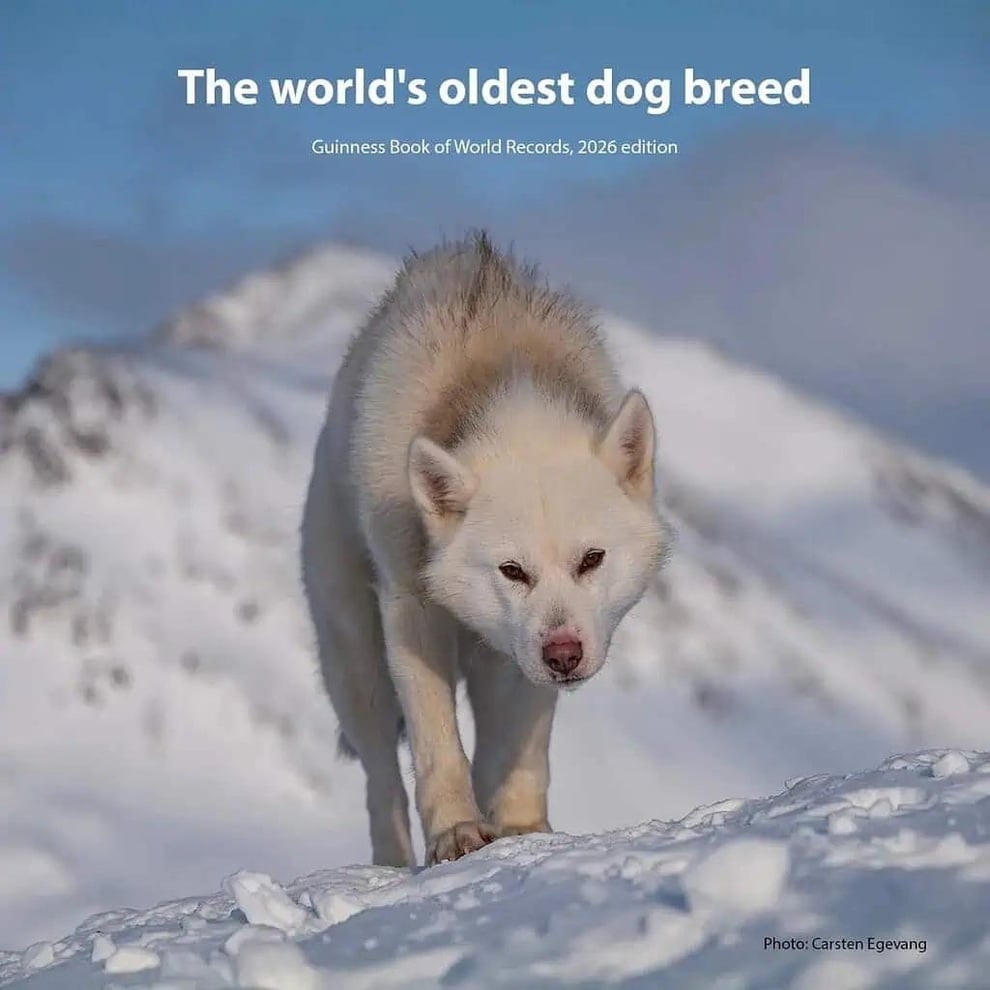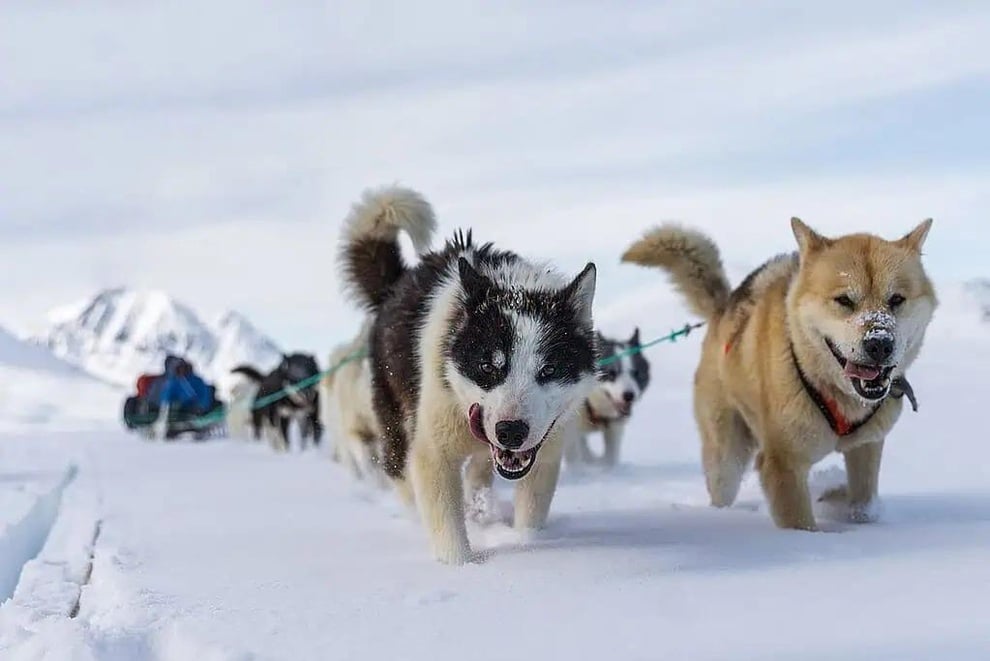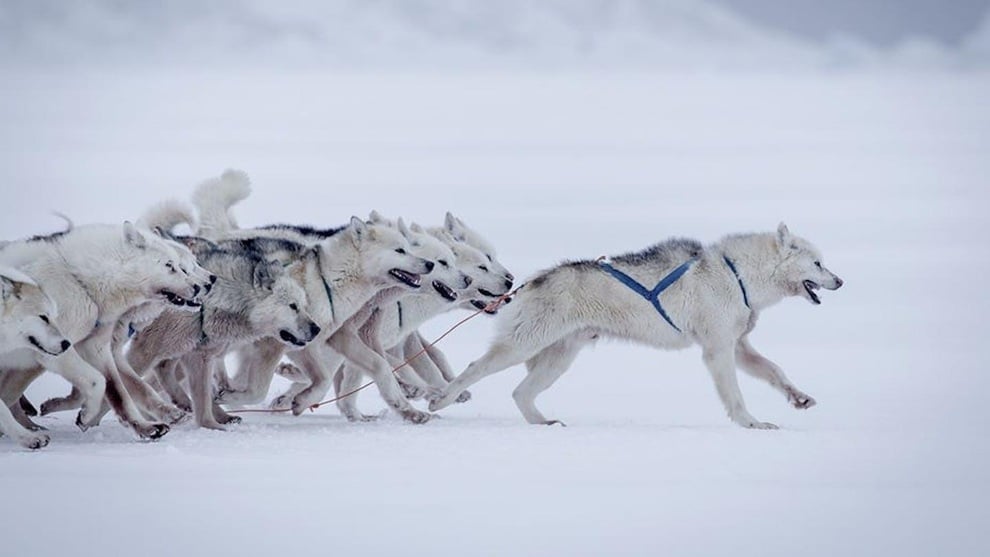The Qimmeq dog, also known as the Greenland sled dog, has long been recognized by scientists as the oldest dog breed on Earth.
For millennia, they have been indispensable companions of Inuit hunters, helping them cross icebergs and conquer frozen lands.
Their genetic history spans nearly 10,000 years from Siberia (Photo: Carsten Egevang).
A new study published in the journal Science analyzed ancient and modern DNA from 92 Greenland sled dogs (both living and long-dead), revealing an extraordinary story.
This is not just a story about dogs, but also an epic tale of human migration and resilience, written from ancient bones and cheek swabs from modern-day dogs.
“The Greenland sled dog is not only the oldest known sled dog breed, but may be the oldest dog breed overall,” said Tatiana Feuerborn, a paleoanthropologist at the US National Institutes of Health and lead author of the study.
The team collected samples from archaeological sites, including traditional clothing made from dog hair, and even dog kennels used by modern dog herders. They then compared the Qimmeq dog’s genetic material to more than 1,900 published dog genomes.
Amazing purity
Their findings show that the Qimmeq dog has retained much of its original genetic identity for nearly a millennium, something extremely rare for a dog.
Most dog breeds, including modern sled dog breeds like the Husky and Alaskan Malamute, have been genetically interbred with other breeds over hundreds of years. However, the Qimmeq is an exception thanks to its remarkable genetic distinction and purity.
“They are working dogs that have been doing the same job for over 1,000 years,” Feuerborn stressed. “That’s what makes them different.”
Greenland dogs accompany Inuit hunters across the frozen fjords of East Greenland (Photo: Wikimedia Commons).
The Migration Journey of the Inuit
Interestingly, the study focused not just on dogs, but on their close relationship with humans. Because the Qimmeq dog migrated with the Inuit across the Arctic, its genes accurately recorded that arduous journey.
By mapping the genetic similarities between Greenland dogs and ancient dogs from Alaska and Siberia, researchers have concluded that the Inuit may have arrived in Greenland earlier than previously thought, perhaps as much as 200 million years earlier (around 800 to 1,200 years ago).
This migration may have taken place before the Norse settlement. “This is one of the first quantitative pieces of evidence that actually proves it,” Feuerborn explains.
The genomes of these dogs also help to elucidate the internal settlement patterns of the Inuit people within Greenland. The four main genetic clusters within the Qimmeq dog population (North, West, East, and Northeast) coincide with the distribution of the indigenous Greenlandic communities.
Resilience in the face of challenges
This breed of dog has long been considered by scientists to be the oldest breed of dog on Earth (Photo: Billetto).
The Qimmeq dog genome has remarkably recorded historical events, such as documented famines and outbreaks of distemper and rabies.
During these crises, dog populations declined and inbreeding increased. Yet the breed has persisted, even today, and despite their plummeting numbers (from about 25,000 in 2002 to just 13,000 in 2020), Feuerborn says they remain genetically healthy. “They’re actually very healthy dogs,” she notes.
In fact, the decline in the Qimmeq breed has many causes: melting ice, shorter winters, shrinking hunting grounds due to climate change, and especially the advent of motorized sleds. Sled dogs were once very important, but are now being replaced by machines, greatly reducing the need for breeding them.
But, as Feuerborn points out, sleds “can’t smell seals or polar bears. They’re not silent. They can’t think for themselves. And they break down.” Qimmeq sled dogs, by contrast, were bred to survive in the Arctic. They’re perfectly adapted to eating meat and fat, enduring extreme cold, and running long distances, qualities that machines will have a hard time replicating.
Interestingly, the study also debunks a common Greenland belief that Qimmit dogs were sometimes crossed with wolves to improve their endurance.
The genetic data, however, did not support this. “We were shocked,” Feuerborn said. These dogs did not show a stronger genetic link to wolves than other Arctic breeds.
Perhaps wolf-dog hybrids simply failed to pass on their genes if they were unable to perform the difficult tasks typically found in sled dogs, and were culled.
Source: https://dantri.com.vn/khoa-hoc/giai-ma-dna-cua-loai-cho-co-xua-nhat-the-gioi-he-lo-nhieu-bat-ngo-20250730084507545.htm




































































































Comment (0)